This year’s summit drew a record-breaking number of more than 500 attendees live in Nashville to learn and discuss actionable solutions to social determinants of health (SDoH) challenges to achieve better outcomes for vulnerable populations.
With three preconference workshops, three content tracks, an impressive lineup of more than 80 speakers, and 28 thought-provoking sessions, this year’s event provided more content and open discussion than ever before. Here’s a recap of our biggest takeaways from the 2022 summit.
A value-based health care system is critical to address SDoH
The push to value-based care continues to be a focal point in the discussion around SDoH. Seema Verma, who served as administrator of the Centers for Medicare & Medicaid Services (CMS) during the Trump administration, emphasized the importance of going “all-in” on value-based care payment models to make real strides in the social determinants space.
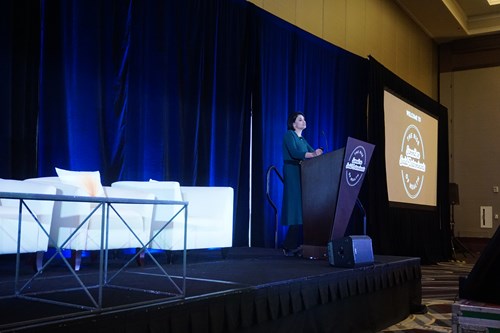
“Value-based care is the opposite of fee-for-service and shifts financial incentives away from volume and toward reducing costs, preventing disease, and improving quality and outcomes,” said Verma during her keynote presentation. “When providers are paid not primarily for administering tests and treatment, but because they maintain or restore beneficiaries’ health, the entire incentive structure of our health care system suddenly shifts toward addressing SDoH.”
But the shift of financial incentives is only half of the equation to moving to a value-based care system that addresses SDoH, said Verma, noting the weight technology and data carry to move payment mechanisms forward in health care. “Without effective, open data sharing to understand the patient’s complete medical and social history, providers can hardly care for the whole person. You can’t care for what you don’t know,” she said.
Verma underscored the need for standardized SDoH data and interoperability between providers so they can exchange data to inform patient care, connect patients with necessary community resources, prevent duplicative workflows, and provide higher quality care.
SDoH funding requires creativity and collaboration
As always, funding of SDoH initiatives and programs was a hot-button topic at this year’s conference. But as progress continues to be made in addressing SDoH, organizations are learning new and innovative approaches to acquire funding to support their efforts.
During a panel discussion, stakeholders from different corners of the SDoH world shared examples of these creative financing mechanisms and how other organizations can establish similar models.
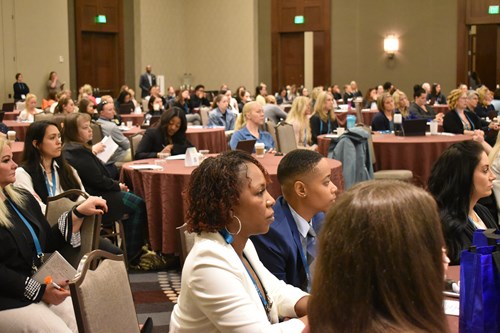
Each of the funding models relied on private-public partnerships and were structured with an outcomes-based framework so that partners received payments if they achieved results. The funding model encompasses a strategic use of dollars and not only improves health care but saves money, explained the panel.
“The power of the private-public partnership is about bringing together a partnership aligned around outcomes. If we can bring in different and new stakeholders into the conversation, measure outcomes, and hold ourselves accountable, we are finding that we’re getting to better outcomes,” said Andi Phillips, managing partner, Maycomb Capital, who served as a panelist during the session.
The industry must address racism to truly impact SDoH
Racism as a social determinant was an important conversation throughout the two-day summit. With the pandemic highlighting health inequities among communities of color and exacerbating longstanding disparities, as well as racial injustices across the country, systemic racism has become a larger conversation, particularly among SDoH stakeholders.
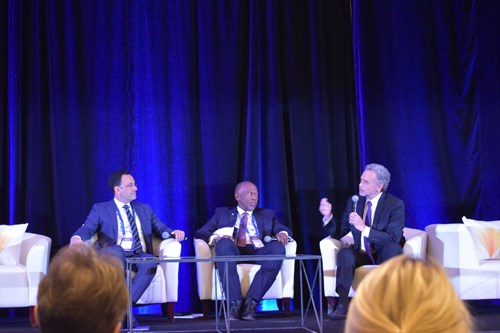
Several sessions and speakers at this year’s summit stressed the need to address racism to truly move the needle in SDoH. During a panel discussion spotlighting how Nashville has leveraged cross-sector collaboration among providers, institutions, and civic leadership to provide equitable care amid the pandemic, racism and the barriers to care it poses was a key conversation point. While discussing the role racism plays in SDoH, panelist James Hildreth, Ph.D, M.D., president & CEO, Meharry Medical College, said people of color face disadvantages when it comes to six structural social determinants, including education, health care, housing, social context, academic stability, and technology.
“If you probe enough, there is one thing that bypasses all of those−racism has played a part in creating barriers to all of those,” said Hildreth, who is also the founder, Consortium of Black Medical Schools, and serves as a member of the Biden-Harris Administration COVID-19 Health Equity Task Force. “Until you fix that problem, none of those things are going to be solved.”
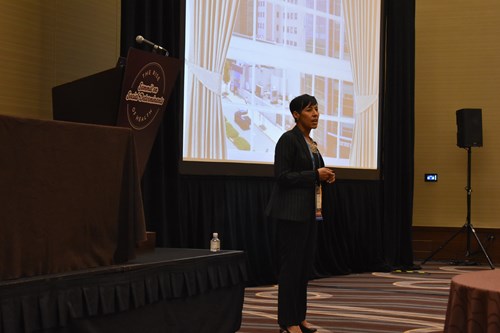
DeAnna Minus-Vincent, MPA, executive vice president, chief social justice & accountability officer, RWJBarnabas Health, echoed a similar message during a track session on the organization’s mission to end racism as a social determinant. While sharing the organization’s commitment and declaration to be an anti-racist organization, Minus-Vincent shared the step-by-step process RWJBarnabas Health has had to take to address racism within the organization and how it’s striving to evolve. “It’s one thing to be not racist but being anti-racist is being proactive to change policies, processes, and procedures to change systemic racism,” she said.
Diversity, equity, and inclusion (DEI) is the foundation to organizational success
The second day of the conference featured a keynote presentation with Certified DEI Trainer Kevin Coleman, empowerment coach and trainer, KMC EMPOWERMENT LLC, who shared what it takes to invite DEI culture within an organization, the importance in recognizing your own unconscious biases and microaggressions, and the value DEI holds within an organization.
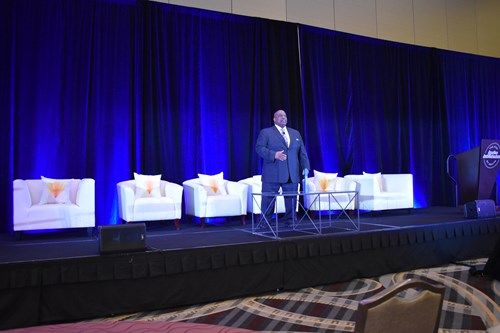
Implementing a culture of DEI benefits an organization in multiple ways, according to Coleman, including reducing cost and capturing unrealized opportunities. “When you’re missing someone at the table, you’re missing an awareness, unrealized opportunities,” he said.
When employees feel a sense of belonging within an organization, they are engaged and committed, fostering an all-in mentality in the work they do. “When you prioritize things like DEI, you have people want to do more for you, they want to be a part of what you’re doing, they want to put in the extra effort,” Coleman said.
Cross-sector partnerships are proving to be the successful path forward
Year after year, the RISE Summit on Social Determinants of Health brings together cross-sectional thought leaders for idea exchange and networking. And as efforts around SDoH have progressed over the years, industry changemakers have found cross-sector collaboration to be the most effective strategy to achieve better outcomes.
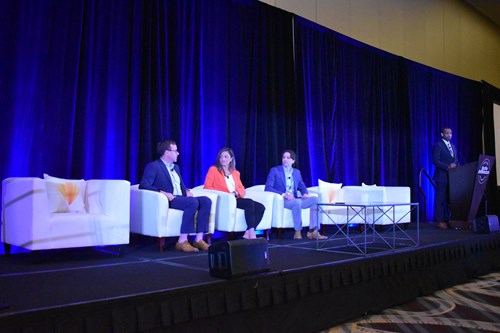
During a session demonstrating a successful cross-sector partnership, a group of diverse stakeholders shared how they collaborated to co-design the social care delivery system, Partnership to Align Social Care, a National Learning and Action Network. The collaboration includes senior leaders from community-based organizations (CBO), health plans, health systems, and national associations partnering to support health and social care delivery through a sustainable, community-centered delivery system that enables value-based care.
“COVID has shone light on the need for this kind of coordination,” said Kelly Cronin, deputy administrator, center for innovation and partnership, Administration for Community Living. “It really brought to light that we need an organized system. We value this partnership across health care leaders and community leaders; we all need to learn from each other to figure this out.”
Since forming the collaborative social care delivery system amid the pandemic, the partnership has enabled a network of more than 25 CBOs to further improve health outcomes in communities throughout the country.
